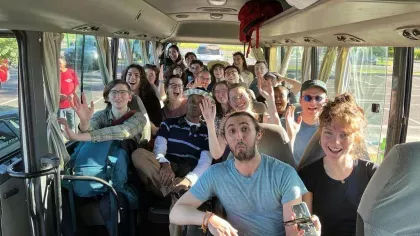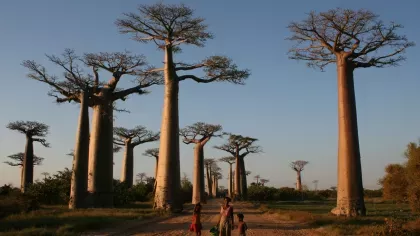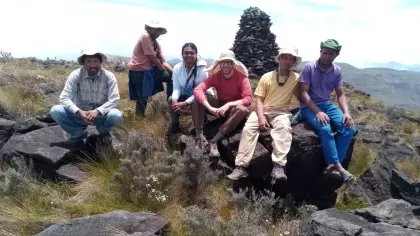19 January 2024
In pictures: Behind the scenes at the Kew Madagascar Conservation Centre
Meet our Malagasy colleagues – safeguarding the incredible biodiversity of their country.

Did you know that Kew has a third site? And it’s in Madagascar!
At the Kew Madagascar Conservation Centre (KMCC), our incredible team of 60 Malagasy colleagues protect the unique flora of Madagascar and support local communities. They have been doing this important work since 1986, and this year I went to meet them.
Discover more of the beauty of Madagascar at this year's Orchids festival






Incredible biodiversity under threat
Madagascar is one of the most biodiverse countries on the planet. It is home to around 15,000 species of plants, including 1,015 species of orchids! There are over 100 species of lemur, and many plants and animals that are only found on the island.
But did you know it is also one of the poorest countries in the world?

Communities in Madagascar rely on nature for their survival.
Our colleagues work with local communities to improve their livelihoods and food security.
This is essential work if we’re to stand any chance of halting the biodiversity loss crisis.
Antananarivo
The capital city is bustling, and surrounded by rice paddies.
Here, our colleagues are hard at work managing dozens of projects that span the entire country. At KMCC HQ, they organise equipment and vehicles for fieldwork, digitise specimens, and doing lab work, among many other tasks.


A highlight for me was meeting the first ever Malagasy mycologist, Anna.
She estimates that only 1% of fungi in Madagascar have been described to science. Anna has her work cut out for her!
Another highlight was visiting the Herbarium at the Parc Botanique et Zoologique de Tsimbazaza.
Here, we met Landy Rajaovelona, our Kew Madagascar orchid expert, and Monsieur Franck, who recently won an award for his 25 years of work at KMCC.

Andasibe
We travelled west to a wet Andasibe, a primary growth rainforest that is home to many endemic rare species, including 11 species of lemur.
Here, we travelled with colleagues from the Millennium Seed Bank who are looking after tree species. We also saw mycology in action with Anna.


We rose early to get to work and were rewarded with meeting four species of lemur, including the indri with their beautiful song.
The lemurs were shy, eating and chattering high up in the trees. The indri is a sacred animal in Madagascar, not to be hunted or harmed.
Along with the sifaka (below), the indri is the largest lemur still in existence – they can weigh up to 9.5kg!
In spite of their shyness, when we stopped to have our own lunch (quietly scoffing sandwiches and boiled eggs), a family of five lemurs came to ground level. From 2 metres away, they observed us just as we had observed them.

Ankafobe village
Our next stop was to the Central Highland village of Ankafobe. It was beautiful to see the views over the hills as we climbed.
With our colleague Livasoa and driver Michel, we visited a project that is working with local farmers to feed people and protect forests.
We camped together next to the forest.
Michel is an experienced KMCC driver, incredibly skilled on the challenging roads.
He is a man of few words who loves his music, and we learnt a lot about Northern Malagasy tunes while in his care.
Michel really came to life when talking about cooking and the food of Northern Madagascar. He volunteered to cook us some dishes while we camped near Ankafobe.
He treated us to fried fish with ginger, garlic, onion and tomato, served with rice. For dessert, he stewed bananas in fresh coconut milk, sugar and vanilla from the biggest vanilla pods I have ever seen. Totally delicious!
Cooking together under the raffia roof, the fire crackling and the rain dripping outside, was my most memorable moment of the trip.




It was a pleasure to meet local farmers like Jean-Claude (below) and their beautiful zebu.
Zebu are domestic cattle that are pivotal to life in Madagascar, providing meat and milk, ploughing the land, and playing an important role in Malagasy cultural events like weddings and independence day.


I was truly inspired by the dedication and passion of our Malagasy colleagues.
Find out more about their work at the Kew Madagascar Conversation Centre (KMCC).



